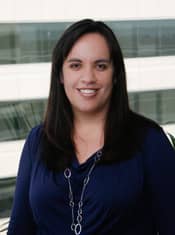
While Hartman loves the business side of running a practice and has proven quite adept at it, he had no formal business education. Instead, he went out and learned by example.
After completing his orthodontic residency, Hartman worked as an associate orthodontist for 2 years in four different practices, and each provided him with a valuable practical education in the business of running an orthodontic practice. Each practice and each doctor taught him something different. Each one had a unique take on how to be successful and had varying success with the choices they made. But each was a learning experience for Hartman. “I got to see what worked and what didn’t, and I was able to borrow the best practices from each office,” he says.
In every issue of this magazine, we show you how your peers are running their practices. We give them the opportunity to share with you the clinical techniques and the products that work for them. We give them a forum to tell you about the practice-management choices that have made a difference in the success of their business. They share their best practices, and you have the opportunity to learn by their example.
This month, I hope you will take the idea of learning by example a step further and lead by example.
Many of you make giving back to the community you serve a cornerstone of your practice’s identity. Yes, there is a marketing element at work there; but more often than not, you want to be an active member in your community and in your patients’ lives. So you sponsor community events, raise money for local causes, and make donations to local schools. And others of you use your time and resources to treat individuals in need of orthodontic treatment.
In this month’s issue, we profile three organizations that are making it easier for you to do just that—the American Association of Orthodontists’ Donated Orthodontic Services program, Smile for a Lifetime, and Smiles Change Lives. Each charitable organization works to match orthodontists with patients in need of treatment, and takes on the bulk of the administrative and marketing tasks associated with this.
Now many of you already provide pro bono care to patients in your community. You do this quietly with no fanfare or credit. And that’s to be commended. But there is something to be said for having your work acknowledged publicly. Because doing so allows you to lead by example. When your peers hear about and see the work you are doing to serve patients in need, they think, “I should do that, too.” And because of your example, more patients ultimately have the opportunity to receive treatment.
So talk about the work you are doing, share your experience, and be an example for others. OP









